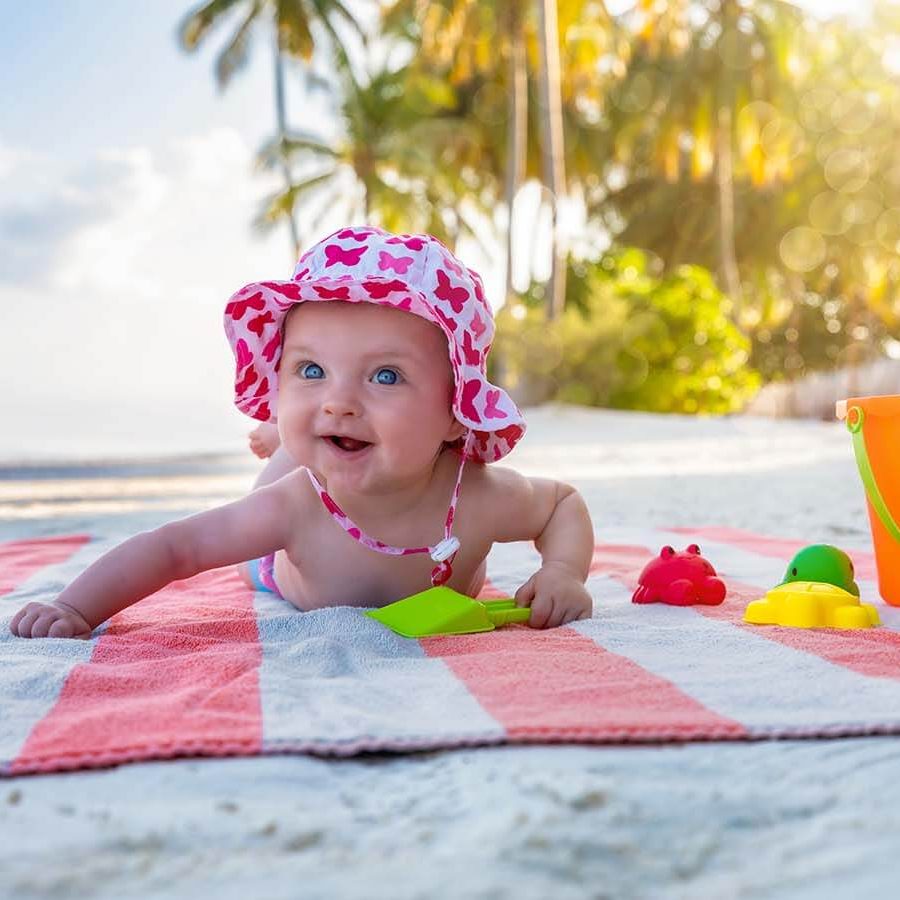Taking your newborn to the beach is a lovely way to enjoy the outdoors and make special memories. Many new parents look forward to those first adventures and just want to be sure their baby is ready for the experience, so knowing what to consider makes all the difference.
With a bit of planning, even the youngest family members can enjoy time by the sea. From choosing the right age to bringing the right gear, a beach trip can be both safe and relaxing.
Learn how to make it smooth and happy for everyone!
Is It Safe To Take a Newborn To The Beach?
It is possible to bring a newborn to the beach, especially for short visits that let them enjoy the fresh air and calming ocean sounds. These brief moments with the family can be soothing and enjoyable when spent in the shade and away from crowds.
That said, many experts recommend waiting until your baby is a bit older — around 2 to 3 months — before planning longer beach days. This gives your baby more time to adjust to temperature changes and makes it easier to manage sun protection and comfort.
When Can a Newborn Go In The Water?
While it may be tempting to dip your baby’s toes in the ocean, it’s best to wait until around 6 months after birth before letting your newborn go in the water. By that age, most babies have better head control and are more capable of handling changes in temperature.
Cold water can be a shock to a young baby’s system, making it harder for them to stay warm and comfortable. Waiting a bit longer helps ensure the experience is both fun and safe, with fewer concerns about chills or overstimulation.
Sun Protection & Temperature Safety
Sun protection should come first when considering going to the beach with a newborn.
Stick to full-coverage clothing, wide-brimmed hats, and shaded areas like tents or umbrellas. For babies under 6 months, it’s best to avoid sunscreen unless advised otherwise by the pediatrician.
Plan beach time for early morning or late afternoon, when the sun is less intense. Watch for signs of overheating or dehydration, such as flushed cheeks or fewer wet diapers. Also, babies can get dehydrated quickly in warm weather, so keep feeding often.
A little preparation goes a long way in keeping your baby safe and content!
Essential Prep & Packing List for the Beach Visit
When thinking about when a newborn can go to the beach, being well-prepared makes all the difference.
Here’s a quick checklist to make a newborn’s visit much safer and enjoyable:
- Choose early morning or late afternoon hours: avoid peak sun (10 a.m. – 4 p.m.) to reduce the risk of overheating and sunburn.
- Set up a shaded area: a large beach umbrella, pop-up tent, or baby beach cabana offers protection from direct sunlight.
- Dress your baby in lightweight, long-sleeve clothing: breathable cotton fabrics, a wide-brimmed hat, and baby sunglasses help shield delicate skin and eyes.
- Use baby-safe mineral sunscreen (for babies 6 months and older): before 6 months, rely on shade and protective clothing. After that, opt for safe skincare products, fragrance-free, zinc oxide or titanium dioxide formulas.
- Pack a soft blanket or play mat: so your baby can lay or stretch comfortably in a clean space off the sand.
- Use a battery-operated fan or cooling towel: helps regulate body temperature in warm beach environments.
Last Reminders on Preparing Your Beach Visit With a Newborn
Don’t forget to pack breastfeeding or feeding supplies, plenty of diapers — including swim diapers — and enough water and snacks for yourself.
Having these basics ready helps ensure a smooth, stress-free outing for both you and your Little One.
With the right planning, beach trips can be a wonderful way to enjoy fresh air and family moments safely.
For more ideas on bonding and play, check out our article on how to play with a newborn!


